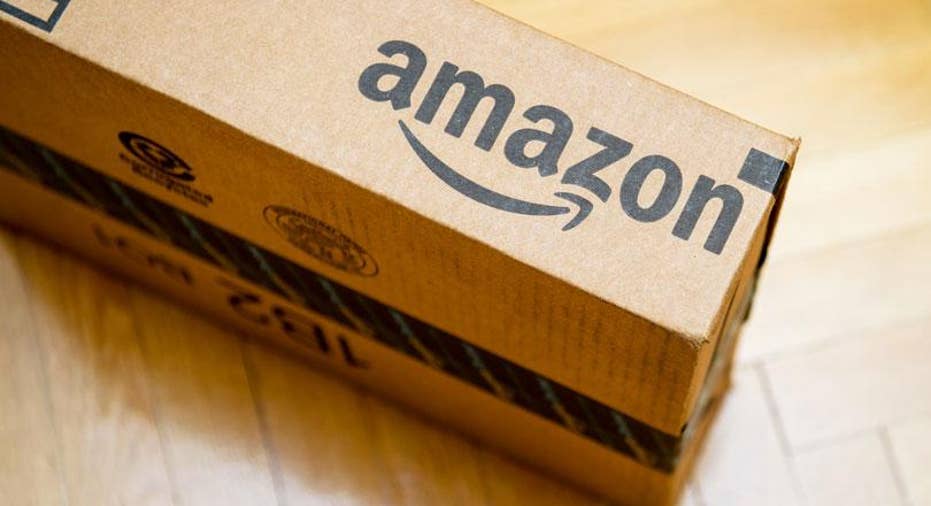No Dummy, Amazon Didn't Kill Macy's

Macy's and Sears—two venerable department store pioneers—recently announced mass brick-and-mortar closures and layoffs galore. More than 10,000 Macy's employees will be sacked and more than 100 stores will be shuttered. Sears will close more than 150 stores, but it is not immediately clear what will happen to the employees at these locations. You'd be remiss to think these struggles are isolated to just a few of the big, old brands. You'd be wrong. J.C. Penney, Kohl's, Sports Authority, Walmart, and Ralph Lauren have all begun to wind down their brick-and-mortar operations. These failures beg the question: What is killing off the retail industry vanguard?
The obvious immediate guess would be the continuing consumer shift to e-commerce, particularly online shopping via retail brand-independent outlets like Amazon, which just announced its intention to add 100,000 jobs over the next 18 months. The hypothesis would follow this logic: Amazon makes shopping cheaper and easier than its brick-and-mortar-focused competitors. People don't want to walk into a mall the week before Christmas to buy a product when they can purchase it from their sofas and have it delivered within 48 hours. Makes sense, right?
Although Amazon's influence (and general e-commerce as an extension) has certainly played a role in hurting brick-and-mortar sales, it absolutely can't be held responsible for this sudden department store pandemic. Here's why: Retail sales in the U.S. eclipsed $3.4 trillion in 2016, according to Forrester Research. Of those sales, which account for online and in-store purchases, only 9 percent of shopping was done online, amounting to roughly $306 billion—a nice chunk of change to be sure, but certainly not enough to topple the brick-and-mortar industry.
"This is not a reflection of a weakness in the retail industry," said Brendan Witcher, Principal Analyst at Forrester Research. "Retail has never been stronger."
(Image via: Euromonitor International)
"It's the Economy, Stupid" (No, It's Not)
So, if it isn't that e-commerce is cannibalizing in-store sales, the next likely hypothesis would be that Macy's and Sears are suffering through a generally poor economy—a solid theory in most other economic climates, but a totally incorrect one today.
The Consumer Confidence Index is at its highest point since 2003. The Index takes into account consumer sentiment about the overall economy, jobs, and income. 2016 holiday sales will exceed $1 trillion—a 3.6 percent to 4 percent increase over 2015, according to Deloitte. Year-over-year sales also increased 3.8 percent, and they're expected to increase again in 2017.
Okay, so if it's not online shopping, Amazon, or a bad economy, then what's killing off the Macy's and Sears of the world? According to Witcher, it's just plain old poor business practice. In other words: No one wants to go into Macy's and Sears anymore. Although Witcher refused to speak about any specific retailer, he said the brick-and-mortar shopping experience at failing retail stores has become homogenized and stale.
"We're at a point where there's more retail square footage than ever before and more retailers entering the market," he explained. "More importantly you've got organizations that need to work on their brand to differentiate themselves. If you plop a consumer down in any one of these [big department] stores they wouldn't know [which store they're in]."
What's the Solution?
Decades ago brands were celebrated for being the one-stop-shop for all of your retail needs. You could walk into a Sears store and buy your clothing, your tools, your fishing gear, and that experience was satisfying. Witcher contends that today's retailers have to provide unique shopping experiences that cater to a specific niche customer segment.
"Today's consumers don't get excited about walking into a store and pulling something off a shelf and pulling something out," he said. "Everything is a game. Everything is digital. Retailers have to pay attention to creating a unique customer journey. Nobody says to themselves, 'Gosh, I hope I can go into a store and stand in line for 15 minutes'. No, I want to shop and move on with my life."
Witcher pointed to Amazon as proof that online commerce isn't the reason stores like Macy's and Sears are struggling. If in-store commerce were dead, then why would Amazon invest in pop-up retail locations, physical bookstores, and Amazon Go grocery stores? Wouldn't the company entrench itself further in digital in order to maintain its e-commerce stronghold?
For Witcher, Amazon Go represents the prime (pun intended) example of a brick-and-mortar experience built for the digital age. With Amazon Go, you can walk into any affiliated store, open the Amazon Go app on your mobile device, scan your phone on the way in, grab all of your goods, and walk out of the store. You don't need to hand over cash or a credit card, and you don't need to worry about grabbing a print-out of your receipt. You'll still have to get off your sofa, but you won't ever have to stand in line again.
This article originally appeared on PCMag.com.